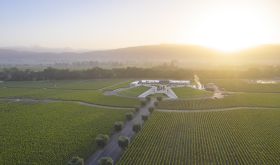Chefs and their waiting staff earn their night off each week, which is why many of the best restaurants are closed on a Sunday or a Monday evening.
But not in San Sebastián in north-west Spain. Home to many tapas bars, and over the past 20 years to many of the world’s most exciting restaurants, it also boasts two long-established restaurants that remain open on both these nights.
The first, Ganbara in the old town, seemed so popular when we arrived at 9.30 pm on a Sunday evening that the crowd outside and by the bar reminded me of that outside a football stadium. Except here everybody was eating and drinking and being entirely sociable.
I was able to take all this in as our Spanish specialist on JancisRobinson.com Ferran Centelles (who seemed acquainted with everyone in San Sebastián) wisely said that we should wait outside while he went ahead. He waved his hand above the crowd a few minutes later and we pushed our way in past the plates of prawns, ham, squid, anchovies with garlic and wild mushrooms to the top of the stairs that lead down to Ganbara’s dining room, where Amaiur Martinez stood, dressed in a white T-shirt and white trousers.
He escorted us downstairs past the small kitchen to a crowded room dominated by a table of 20 young men and women with Albert Adria, the hugely talented younger brother of Ferran of elBulli fame, was gathered. This had to be a good sign, I thought.
And so it proved. The next engaging face to appear was Amaiur’s mother, Amaya Ortuzar, who ostensibly came to take our order. Dressed in a black and white striped blouse and black trousers sporting bright crimson hair and one strikingly dangly earring, Amaya possesses all the traits of the quintessential maitresse d’. Quick of smile, warm, she has a very good idea of what you want to eat even before you have had the chance to look at her menu.
We asked for fish, no nuts and no mushrooms. She rattled off a menu: the thinnest slices of tuna carpaccio, grilled langoustines, percebes (sea snails), a Dover sole, and, as one of our party was Turkish, a rib of beef. The wine list took a little longer before we eventually settled on a 2014 El Molar Jumilla (€18) and a rather oaky 2005 Gran Reserva 904 from La Rioja Alta (€43) that contributed to a final bill of €420 for the four of us.
Then from a seemingly consistently changing team of smiling waitresses, another leitmotif of this city, the food started arriving. The percebes were a pain to remove from their shells but they did definitely taste of the sea. The sole was perfectly cooked and slid off the bone. Finally, came a dessert for us all to share, strawberries warmed under the salamander and topped with ice cream, which was absolutely delicious.
As we were leaving, I saw that the staircase was blocked by the young chefs from Adria’s table. They had apparently left but then returned to pay their bill individually. Amaya was preoccupied with sorting this out but I put my head into the kitchen and kissed her hand to say thank you. She kissed mine in return.
Monday night can be even more difficult than Sunday but a tip-off set us off on a 15-minute cab ride from the city centre to Portuetxe, a popular local restaurant that from the outside looks like a throwback to several hundred years ago.
A large white half-timbered A-frame of a building, with an enormous asador, or grill, burning outside, the restaurant’s interior is similar with white walls, ancient wooden beams and lined with enormous old cider casks.
This was exactly as Javier and Ana Bereciartua had found it 35 years ago, a place where the locals came to drink cider. As they practised their skills at hospitality, what the kitchen offered began to grow until they found their métier as restaurateurs, a skill that has been drilled into their son, Borja, who returned last January after three years away and who is in the throes of taking over.
What is exciting about this type of old-fashioned menu is its ability to please my wife, a closet vegetarian, and myself, who will happily eat any kind of fish, often the more obscure parts.
We began with the simplest of salads. Little Gem lettuce from Tudela, Navarra, cut into fine segments lengthwise, topped with diced garlic, anchovies and olive oil. Each ingredient added a different flavour and texture, playing a vital role in the overall triumph of apparent simplicity.

From there we went our separate ways. My wife ordered a starter portion of grilled prawns, sweet and succulent, together with another vegetable triumph, this time a side order of red peppers. These had been cooked twice, first in the oven and then grilled, which gave them a caramelised flavour that made them so sweet they would have been a suitable substitute for dessert.
My particular penchant was satisfied by a first course of scrambled eggs with kokotxas, cod cheeks, and then a main course of salted hake cheeks while I looked on at tables of predominantly men enjoying whole grilled fish. We drank a 2008 Viña Ardanza rioja for the ridiculously low price of €25 and ended with a bill of €125.
Ganbara c/San Jeronimo 21, 20003 San Sebastián; tel +34 943 42 25 75. Closed Monday.
Portuetxe Igora bidea 71, 20018 San Sebastián; tel +34 943 21 50 18














